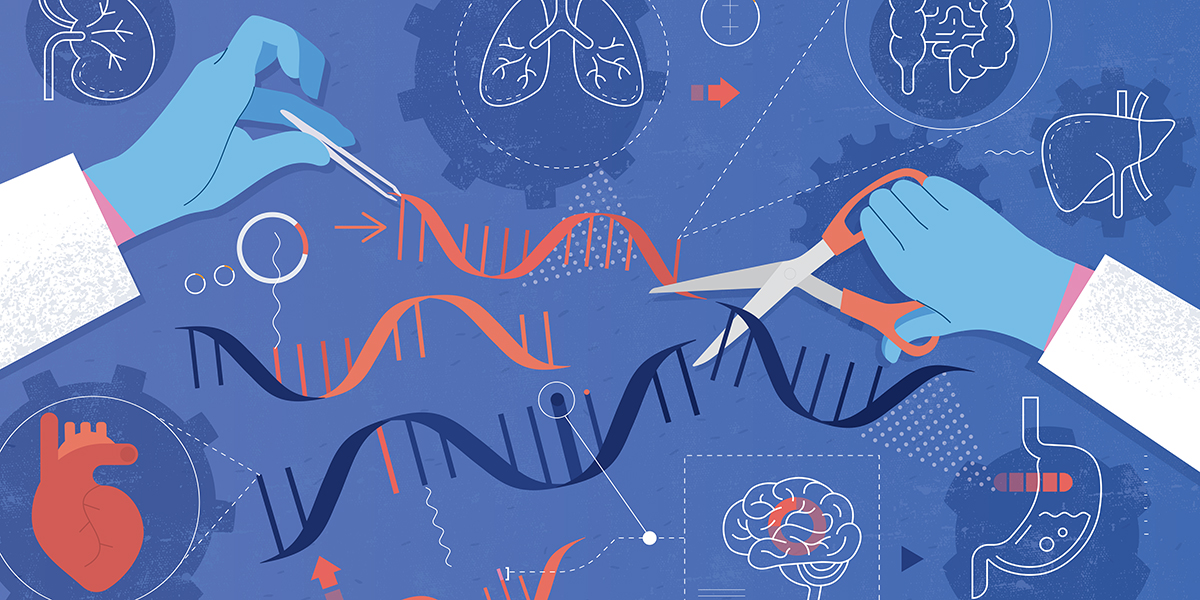
Introduction
The discovery of CRISPR-based gene editing in the early 2010s has greatly expanded the new frontier of genome engineering.1 With CRISPR and related technologies, scientists are now able to “fix” genetic mutations in cells with simplicity that’s comparable to finding and replacing typos in a drafted abstract.
CRISPR and gene editing technologies like it have enormous potential to help address otherwise incurable conditions and genetic diseases. These innovations are giving rise to a growing number of therapeutic discovery efforts in gene therapy. However, with the possibility of unintended mutations and off-target effects, safety in exploring gene editing as a therapeutic modality remains a major concern. To emphasize the importance of safety, the U.S. Food and Drug Administration (FDA) published a draft guidance on human gene therapy products incorporating human genome editing.2
In this article, we explore how Tn5 transposase is a powerful tool to help measure the fidelity and QC of gene editing while adhering to FDA safety guidance.3
On- and Off-Target Gene Editing
One of the key concerns with gene editing is the potential for off-target effects, where the gene editing tool inadvertently makes changes at unintended locations in the genome.
Two primary questions arise from many gene editing experiments:
- On-Target Effects: Have the targeted gene edits been made to the intended sequence in the genomes of edited cells?
- Off-Target Effects: Have there been any unintended edits to sequences other than the intended sequence in the genomes of edited cells?
Both on- and off-target effects are relevant for understanding the impact of an experiment. Also, these effects are crucial to answering questions as to whether the desired change was in fact made and made absent of any additional unintended changes to the genes of edited cells.
To answer these questions, scientists have created a wide range of different molecular methods to measure the impact of gene editing in an experiment.
Polymerase chain reaction (PCR) is one method. Scientists use PCR to check for the exact sequences that correspond to the desired editing event. PCR is a sensitive tool that allows us to accurately detect a small number of desired targets from a population of cells.4
A more robust approach is to use next generation sequencing (NGS) assays, such as GUIDE-seq or UDiTaS, to detect the sequences that are near to intended target edit sites in a genome.5
seqWell’s Transposase-Based Solutions
seqWell has spearheaded a variety of innovations that use a flexible and powerful tool in NGS assays. A number of our products use the transposase enzyme as a way of creating barcode payloads to multiplex samples for different applications.
Another example of a transposase payload that scientists can use for more sensitive counting applications is a unique molecular identifier (UMI). UMIs allow us to more accurately distinguish different molecules in a sample that may, for example, have multiple copies of a similar target sequence.
The ability to create a UMI transposase payload was the basis of recent work we published in collaboration with Editas Medicine. This work demonstrated the application of Tagify transposase-based reagants to optimize Editas’ UDiTaS method, which is used for assessing CRISPR on-target editing and structural changes.6,7 We also highlighted this approach in a webinar with Georgia Giannoukos, PhD, Director of NGS at Editas. Giannoukos discussed the application of UDiTas within the context of a gene editing approach to restore cell function in Leber Congenital Amaurosis type 10.8,9
“The (Tagify) batches are consistent, and they provide similar tagmentation profiles and editing results. The reactions can be scaled from 96 to 384 wells, and we’ve been able to process thousands of reactions over one year,” says Giannoukos.
Writing the Future of Gene Editing QC
Therapeutic applications of gene editing systems are still in the early stages of development, and further research is needed to fully understand their potential safety and efficacy benefits.10
Researchers will increasingly rely on FDA’s guidance, thus increasing the need to conduct comprehensive preclinical safety studies to assess the potential risks and benefits of gene editing. In this light, tools that help researchers create and customize assays to allow for these studies will be increasingly critical.
The use of transposase-based approaches, such as seqWell’s Tagify reagents, offers a promising new innovation that will help researchers create QC methods that ultimately will promote the development of safer and more effective gene editing.11
To learn more about Tagify, our customizable transposase-based NGS solution, check out our webinars “Enabling Sequencing Applications with Improved Transposase-Based Solutions” and “Assessing CRISPR On-Target Editing and Structural Changes with UDiTaS™ using Tagify™ Reagents”.
References
- https://www.science.org/doi/10.1126/science.1258096
- https://www.fda.gov/regulatory-information/search-fda-guidance-documents/human-gene-therapy-products-incorporating-human-genome-editing
- https://seqwell.com/tn5-transposase-a-breakthrough-enzyme-for-dna-library-preparation/
- https://www.ncbi.nlm.nih.gov/pmc/articles/PMC3768498/
- https://www.nature.com/articles/nbt.3117
- https://seqwell.com/the-transcription-series-enabling-sequencing-applications-with-improved-transposase-based-solutions/
- https://bmcgenomics.biomedcentral.com/articles/10.1186/s12864-018-4561-9
- https://www.youtube.com/watch?v=OqR6MmsE7VQ&t=2s
- https://pubmed.ncbi.nlm.nih.gov/30664785/
- https://www.ncbi.nlm.nih.gov/pmc/articles/PMC7146048/
- seqWell’s Tagify
